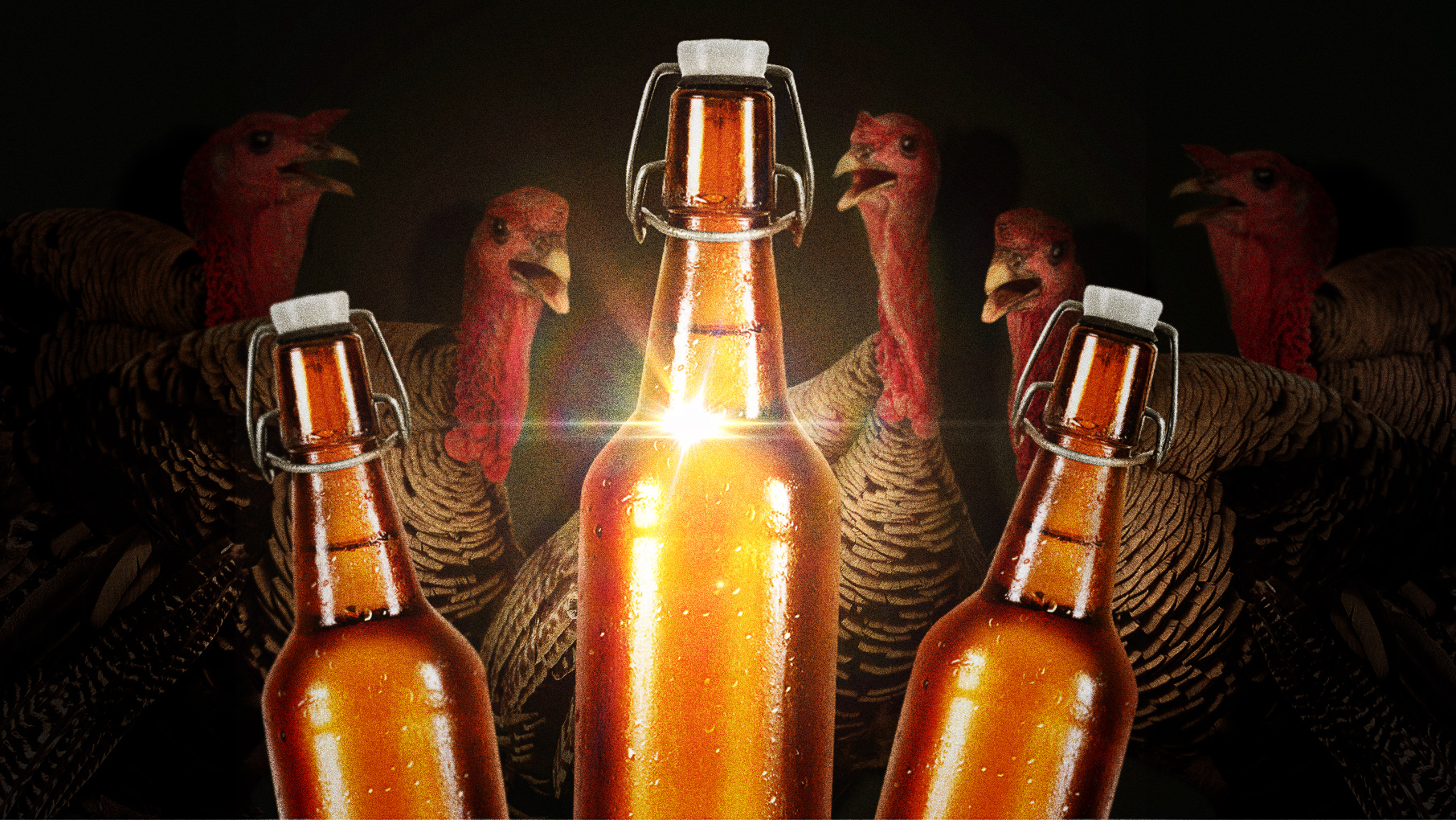Bring All Your Mixed-Fermentation Beers To Thanksgiving
Wine magazines will spend pages upon pages explaining which bottles to bring to Thanksgiving: a viognier to pair with the turkey, a pinot noir to accentuate cranberry sauce. Beer pairings needn't be so fussy—pop open a mixed-fermentation beer and you'll be more than fine.
Mixed-fermentation beers are called that because they're fermented with bacteria and yeast other than traditional brewer's yeast. Those other yeast—usually Brettanomyces—and bacteria like lactobacillus and pediococcus add complex flavors that range from tart and citrusy to leathery and musty to fruity and ripe. These beers are sometimes called sour beers or wild beers, though both those terms feel alternately vague or imprecise, so we'll use mixed-fermentation going forward. To find mixed-fermentation beers, you'll want to ask a good beer store employee for recommendations, or keep an eye out for words like "sour," "tart," "Brettanomyces," or "wild" on the label. Some styles that fall under this category include but certainly aren't limited to Flanders reds, lambics, American wild ales, Berliner weisses, and geuzes.
Why do these beers work well with a Thanksgiving feast? Let's remember the cardinal rules of beer-and-food pairing: Beers should compliment, contrast, or cut—either mirroring flavors in food, contrasting with them, or cutting through richness. Most mixed-fermentation beers can do all three.
The most obvious feature is that the tartness present in many of these beers helps cut through fat, carbs, and meaty proteins and refreshes the palate between heavy bites. I find these beers are often appetite stimulants, and some have a citrusy tartness that literally makes my mouth water. The second feature is contrasting: The bright, citric flavors in certain mixed-fermentation beers offer a sunny counterpoint to dishes such as stuffing, root vegetables, and poultry. Lastly, some mixed-fermentation beers have a rustic quality that feels substantial enough to synch up with heavier fall foods. Don't forget, too, that many mixed-fermentation beers are brewed with fruits like plums, raspberries, even cranberries, which can be fun to drink alongside dishes using these ingredients.
But you don't need to explain any of that to your family or friends gathered for Thanksgiving; nerdy beer explanations put people to sleep faster than turkey breast and gravy-soaked rolls. Instead, tell them that the beers you've brought probably aren't the types of beer they're used to. It's often said that wine drinkers especially like mixed-fermentation beers, though I question whether that's just a cliché. I have found that drinkers who don't like the flavors of traditional beer sometimes enjoy the tart and fruity qualities of mixed-fermentation beers—especially if they're fans of kombucha, vinegar-based drinks, or citrus fruit. These beers might not be for everyone, but what beverages are?
Lastly, if you're an ardent beer fan with a cellar full of these mixed-fermentation beers, let Thanksgiving be an excuse to do some tidying up. I promise you won't regret opening a special bottle and sharing it with family any more than you'd regret hoarding it in your cellar for some unknown, more special future occasion. Pop those bottles and offer gratitude for those gathered around you—or for the beer that helps make them more bearable.
